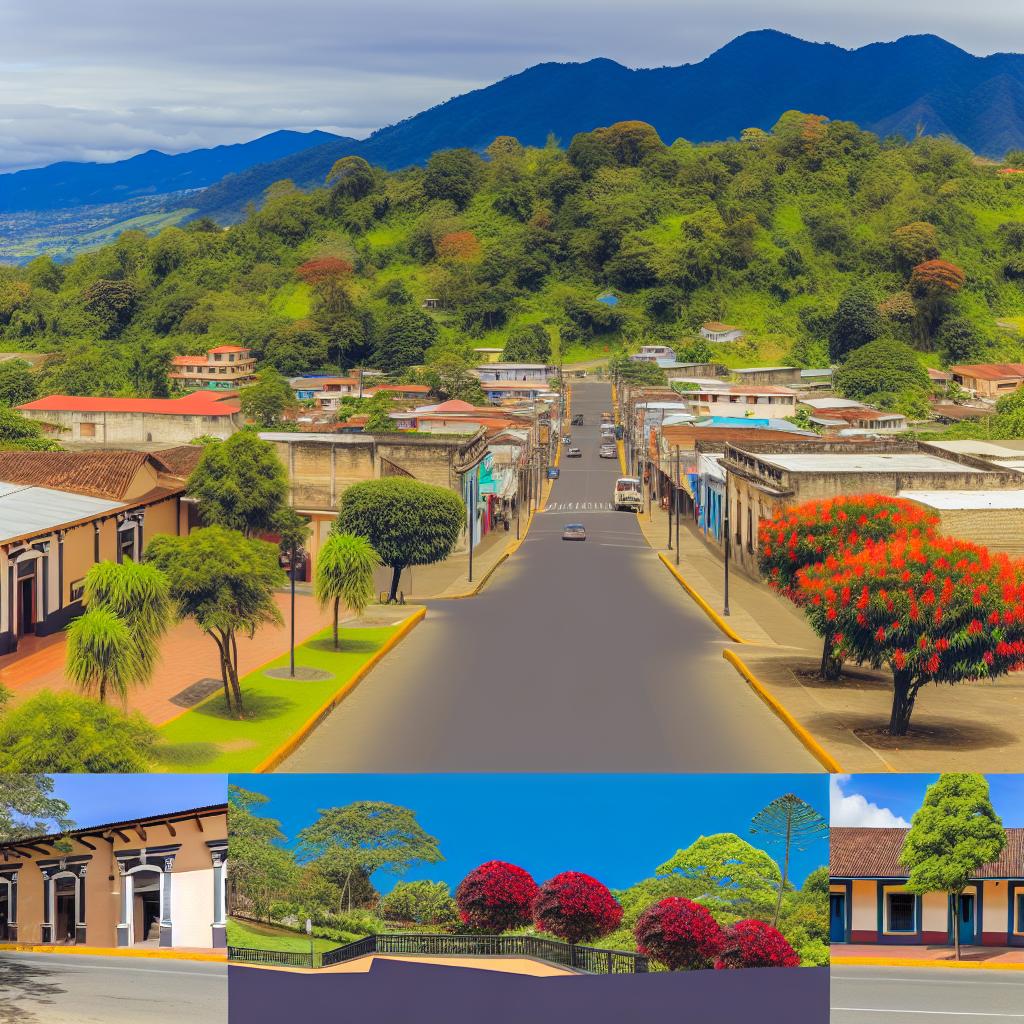Contents
Overview of Siguatepeque
Located in the heart of Honduras, Siguatepeque is a picturesque town nestled within the Comayagua Department. With a population of approximately 70,000 people, it serves as a significant cultural and economic center in the region. Its strategic position between the country’s two largest cities, Tegucigalpa and San Pedro Sula, ensures that it is an accessible destination via the CA-5 highway. This roadway not only facilitates transportation and logistics but also solidifies Siguatepeque’s role as a connective hub in Honduras.
Historical Background
Siguatepeque boasts a rich historical tapestry, with origins dating back to the late 16th century. The name Siguatepeque is derived from the Nahuatl language, translating to “town of beautiful women.” This name hints at the historical and cultural amalgamation that has shaped the town over the centuries. Initially a Lenca settlement, Siguatepeque has evolved, blending various cultural influences while steadfastly preserving its unique traditions.
Colonial Influence
The colonial era left an indelible mark on Siguatepeque, particularly as an important agricultural hub. This period of growth and prosperity is still visible in the town’s architecture. Visitors will find several colonial-era churches and buildings, offering a glimpse into the past and highlighting Spanish architectural influences. These historical structures serve as reminders of a bygone era and stand as testimony to the town’s enduring legacy.
Geographical Features
Siguatepeque is situated in a fertile valley surrounded by lush mountains. The moderate climate, with temperatures averaging between 15 to 27 degrees Celsius, creates an ideal location for agriculture, particularly for coffee and pine forests. The fertile land not only provides the foundation for agricultural endeavors but also supports the town’s ecological and economic sustainability.
Natural Attractions
The town’s surroundings are replete with opportunities for outdoor activities, making it a haven for nature enthusiasts. The nearby Montaña de Comayagua National Park, for instance, is a popular destination for hiking and bird-watching. This park features a rich biodiversity, including several endemic species of flora and fauna, adding to the allure for ecotourists. The natural landscape of Siguatepeque promotes not just recreation but also offers avenues for environmental education and conservation efforts.
Cultural Significance
Siguatepeque serves as a melting pot of cultures, strongly influenced by indigenous Lenca customs juxtaposed with Spanish traditions. This cultural amalgamation is evident in every facet of life in the town—from festivals to food to local craftsmanship. The vibrant cultural landscape offers residents and visitors alike a rich tapestry of experiences and learning opportunities.
Festivals and Traditions
Among the town’s most celebrated events is the annual Feria de San Pablo, held in June. This festival is a vibrant display of traditional music, dance, and culinary delights, attracting throngs of visitors from the region and beyond. It is an occasion where the community comes together to celebrate its heritage and showcase its cultural vibrancy and hospitality.
Culinary Heritage
The local cuisine of Siguatepeque is characterized by fresh, regional ingredients. Dishes frequently feature corn, beans, and avocados, complementing the town’s agricultural roots. Siguatepeque is particularly renowned for its coffee, cultivated in the surrounding highlands and renowned for its rich flavor. This culinary heritage not only offers gastronomic delight but also represents the town’s agricultural prowess.
Infrastructure and Economy
In recent decades, Siguatepeque has witnessed steady growth, marked by improvements in infrastructure and economic development. The agriculture sector remains vital to the local economy, alongside emerging industries such as tourism and handicrafts. This diversified economic base ensures the town’s resilience and future growth prospects.
Transportation Networks
The accessibility of Siguatepeque is significantly enhanced by its strategic location on the main highway connecting Tegucigalpa and San Pedro Sula. Public transportation options, including buses and taxis, facilitate seamless travel to and from the town, ensuring connectivity and mobility for residents and visitors alike.
Tourism Potential
The amalgamation of cultural richness and natural beauty positions Siguatepeque as an attractive destination for tourists seeking authentic experiences in Honduras. Efforts to promote sustainable tourism are ongoing, focusing on conserving the area’s natural resources while highlighting its unique cultural heritage. Such initiatives aim to balance economic development with environmental and cultural sustainability.
Local Craftsmanship
Visitors to Siguatepeque have the opportunity to explore local markets showcasing a wide range of handmade crafts. These include textiles, pottery, and woodwork, all reflecting the town’s artistic heritage. These crafts not only provide income for local artisans but also offer travelers unique mementos from their visit. For those interested in exploring tourism further, the Honduras Tourism Board website provides additional resources and insights.
Impact of Earthquakes
An important aspect of Siguatepeque’s geographical makeup is its susceptibility to natural occurrences, particularly earthquakes. Honduras, situated along the Pacific Ring of Fire, experiences seismic activity, and Siguatepeque is not immune to this. Historical records indicate that the region has experienced tremors that have affected infrastructure and architecture.
Response and Resilience
In response to seismic threats, Siguatepeque has undertaken measures to enhance building standards and infrastructure resilience. Modern architecture now incorporates earthquake-resistant designs and materials to safeguard lives and minimize damage. Community awareness programs and emergency response training have become integral in preparing residents for potential earthquake scenarios.
Economic Impact
While infrequent, earthquakes have posed risks to Siguatepeque’s economy. Disruptions in agriculture and tourism, the town’s primary economic sectors, can lead to financial setbacks. However, proactive resilience planning and community efforts have played crucial roles in minimizing the long-term economic impact, ensuring that recovery is swift and effective.
In conclusion, Siguatepeque continues to thrive as a vital center of cultural, economic, and natural significance in Honduras, showcasing its powerful combination of history, tradition, and adaptability in the face of natural challenges. The town exemplifies both the imperishable spirit of its people and their commitment to preserving and sharing their unique heritage with the world.
